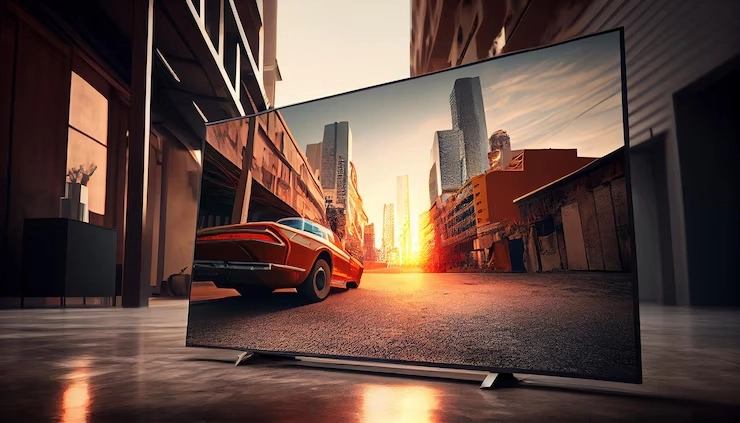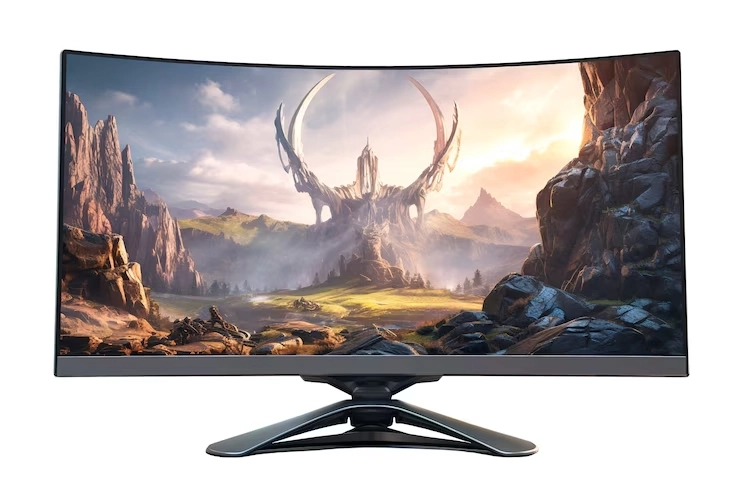-
OUTDOOR LED DISPLAY
OUTDOOR LED DISPLAY
-
INDOOR LED DISPLAY
INDOOR LED DISPLAY
-
RENTAL LED DISPLAY
RENTAL LED DISPLAY
-
SHELF LED DISPLAY
SHELF LED DISPLAY
-
POSTER LED DISPLAY
POSTER LED DISPLAY
-
CUBE LED DISPLAY
CUBE LED DISPLAY
-
FLEXIBLE LED FILM
FLEXIBLE LED FILM
- TRANSPARENT LED DISPLAY

LED TV vs LCD TV: Key Differences You Should Know Before Buying
Can’t pick between an LED TV or an LCD TV? This guide makes it easy by showing how they differ in picture quality, power use, and price. Find the best screen for your home with this simple breakdown!
What is an LCD TV?
LCD TVs, or Liquid Crystal Display televisions, are flat screens that use tiny crystals to make images. They need a backlight to light up the crystals, which show bright colors and clear pictures. For example, an LCD TV can make a cartoon look super colorful on your living room wall.
Features of LCD TVs
LCD TVs are known for being light and thin, so you can hang them on walls or set them on stands easily. They come in sharp resolutions like Full HD or 4K, giving you super clear visuals. Plus, LCD TVs use less power than old TVs like plasma screens. For instance, you can watch movies all day without a huge electric bill.
Advantages of LCD TVs
- Easy to find: You can buy LCD TVs in all sizes and prices at most stores.
- Saves power: They use less electricity than old CRT or plasma TVs.
- Clear pictures: High resolutions make images sharp, like seeing every detail in a game.
- Light and slim: Their thin design makes them easy to move or hang up.
Limitations of LCD TVs
- Narrow viewing angles: Pictures can look fuzzy if you watch from the side.
- Backlight leaks: Light might show unevenly, making some spots brighter.
- Weaker blacks: Dark colors can look gray compared to other TVs.
What is an LED TV?
LED TVs, or Light Emitting Diode televisions, are like LCD TVs but better. They use tiny LEDs for backlighting instead of old fluorescent lights. This makes pictures brighter and clearer. For example, an LED TV can make a movie scene look super vivid.
Features of LED TVs
LED TVs shine brighter and show better contrast than regular LCD TVs. Their panels are super thin because LEDs are small. They also save power and often have smart features, like apps for streaming shows. For instance, you can watch YouTube right on your LED TV.
Types of LED TVs
Edge-Lit LED TVs
Edge-lit TVs put LEDs along the screen’s edges. This makes them super thin but can cause uneven light. They’re great for small spaces, like a bedroom.
Full-Array LED TVs
Full-array TVs have LEDs all over the back. They give even light and better contrast with dark and bright spots. These are awesome for movie nights in your living room.
Direct-Lit LED TVs
Direct-lit TVs use a grid of LEDs but don’t have fancy dimming like full-array models. They’re cheaper but still show nice pictures, perfect for a family room.
How Do LED and LCD TVs Differ?
Brightness and Contrast Levels
LED TVs beat LCD TVs in brightness and contrast. Their LED lights make dark blacks and bright whites pop. Full-array LED TVs are especially good at this. For example, a night scene in a movie looks super real on an LED TV.
Energy Efficiency Comparison
Both TVs save power, but LED TVs use even less. Their LED lights are super efficient. This means lower bills and a greener choice. For instance, an LED TV can run all day and still cost less to power than an LCD.
Image Quality and Color Accuracy
LED TVs show better colors and clearer pictures than LCD TVs, especially high-end ones with HDR. This makes movies and games look amazing. For example, a soccer game on an LED TV shows every blade of grass in bright green.
Thickness and Design Variations
LED TVs are thinner than LCD TVs because LEDs take up less room than fluorescent lights. This makes them look sleek on your wall. For instance, an LED TV can fit snugly in a small apartment.
Price Differences
Both TVs come in many prices, but basic LED TVs cost a bit more than simple LCD TVs. That’s because LEDs have newer tech. Still, you can find deals on both, like a cheap LCD for a kid’s room or a fancy LED for your home theater.
Which One Should You Choose: LED or LCD?
Evaluating Picture Quality and Viewing Experience
LED TVs win for picture quality and watching fun. They show better colors and clearer images, especially with HDR. Their brightness and contrast make dark and light scenes pop, like stars in a night sky. For example, watching a superhero movie on an LED TV feels like you’re in the action.
LCD TVs can have issues with side viewing or uneven light, which might bug you if you watch from different spots. They still give sharp pictures, but they don’t match the bright, bold look of LED TVs. If you want the best movie night, LED is the way to go.
Considering Energy Consumption
Both LED and LCD TVs save power, but LED TVs are even better. Their LED lights use less electricity, which cuts your bills and helps the planet. Some LED TVs even adjust brightness to save more power. For example, an LED TV in a sunny room can dim itself to use less energy.
LCD TVs use fluorescent lights, which need more power than LEDs. They’re still better than old TVs, but not as green as LED TVs. If saving money and energy matters to you, pick an LED TV.
Budget-Friendly Options for Buyers
Price is a big deal when buying a TV. LCD TVs are usually cheaper than LED TVs because they use older tech. You can grab a basic LCD TV for less, perfect for a spare room or tight budget. For example, a small LCD TV is great for a kitchen.
LED TVs cost a bit more but give you better pictures and savings over time. If you want cool features like HDR or a super thin look, an LED TV is worth the extra cash. For instance, a mid-range LED TV can make your living room feel like a theater without breaking the bank.
Longevity and Maintenance Factors
Both TVs last a long time, but LED TVs are tougher. They have a service life of 100,000 hours, so you can use them for years. They don’t need much fixing, saving you money. For example, an LED TV in a store can run ads all day and still work great.
LCD TVs might need more fixes, like replacing backlights that wear out. Repairs aren’t too pricey, but LEDs are more reliable. If you want a TV that lasts, go with an LED.
Why is UHLED a Reliable LED Screen Supplier?
Overview of UHLED’s Expertise in Display Technology
UHLED is a big name in cool screen tech. Started in 2015, they have a 3,800-square-meter factory. UHLED makes indoor and outdoor HD LED displays, rental screens, transparent screens, shelf screens, and irregular screen designs for all kinds of uses. They have a team of eight engineers who help out worldwide. For example, they can set up a huge screen for a concert in another country.
Benefits of Choosing UHLED Screens
UHLED’s screens are top-notch because they test everything carefully. They give a five-year warranty and free parts if something breaks from factory issues. Their screens have neat features like high refresh rates (3840Hz) and save power. For instance, a UHLED screen in a mall shows smooth ads without flickering.
UHLED’s products meet tough global rules, like CE, ROHS, FCC, UL, CCC, ETL compliance. This means they’re safe and reliable everywhere. They sell to places like Europe, America, Japan, and South Korea, making them a trusted pick for awesome LED TVs and displays.
Conclusion: LED vs LCD TVs – Choosing the Right Display for Your Needs
Picking between an LED TV or LCD TV depends on what you want. LED TVs give brighter pictures, better contrast, and save more power, making them great for awesome movie nights. LCD TVs are cheaper and still work well for everyday watching. For top quality and long-lasting screens, UHLED’s advanced LED displays shine with cool tech and tough builds, perfect for homes or businesses.
FAQs About LED and LCD TVs
Q1: What is the lifespan difference between LED and LCD TVs?
A: LED TVs last up to 100,000 hours. LCD TVs can have backlight issues over time, so LEDs last longer.
Q2: Are LED TVs more energy-efficient than LCD TVs?
A: Yes! LED TVs use less power with their efficient lights, saving money and energy.
Q3: Can an average viewer notice the difference in picture quality between the two?
A: Totally! LED TVs have brighter colors, better contrast, and clearer pictures, making them stand out for most people watching shows or games.

























